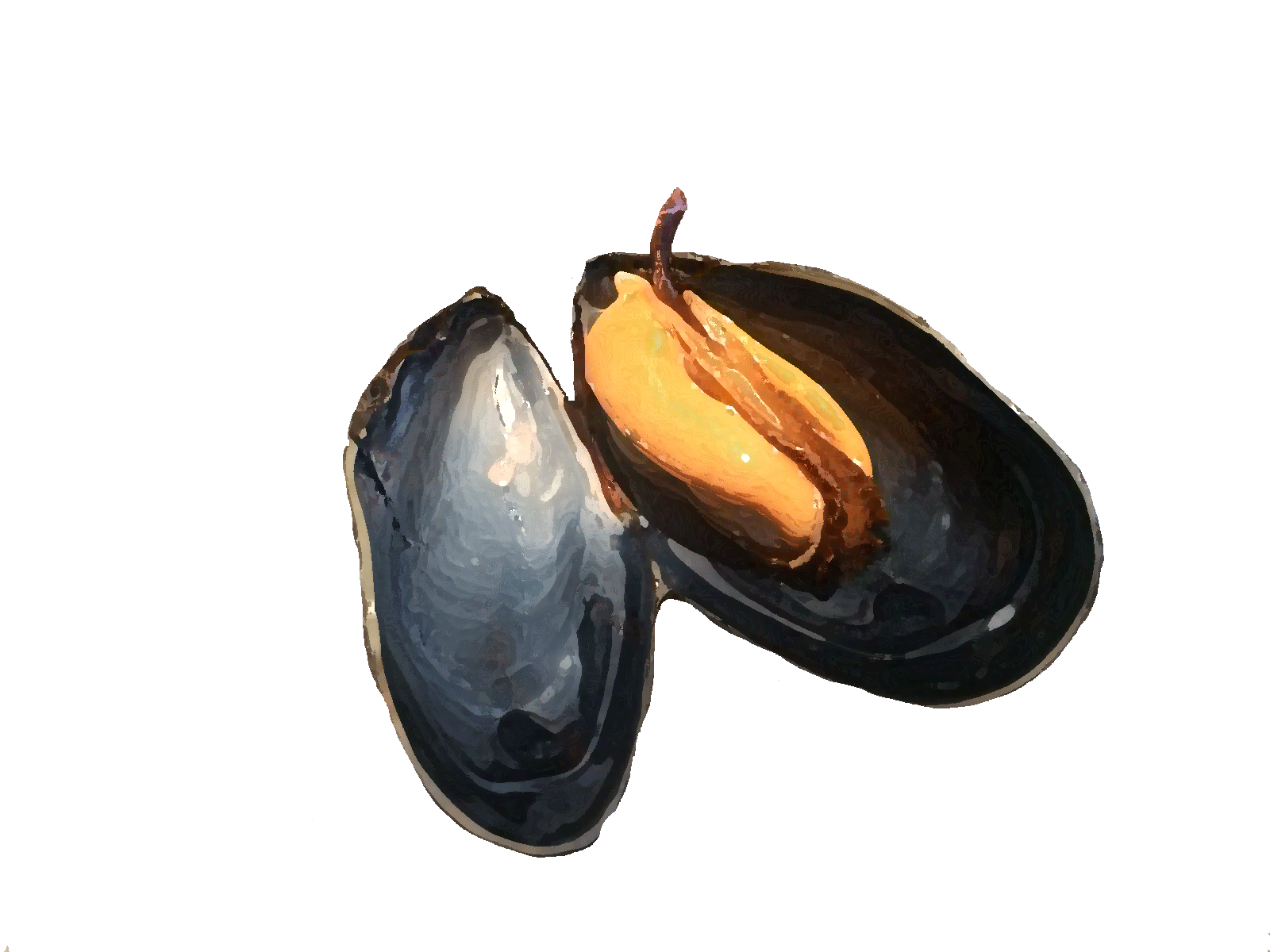Pocket pipes
Fouling on the MZIs is also a common problem, resulting in less capture. One example is pocket pipes. In Canada, bagpipes are causing great damage to mussel-hanging culture. Bagpipes on MZIs can compete with mussels for space and for food. Like clams, pocket squirts are efficient filterers. Buttonpipes can filter particles as small as 1 to 2 µm from the water with their gill gut. This makes them competitors to the mussels on the MZIs that filter particles >2-7 µm out of the water with their gills. An adult pocket pipe filters about 0.5 to 2 liters of water per hour. This corresponds to mussels being able to filter between 1 and 3 liters per hour per mussel. Bagpipes filter algae and zooplankton as well as shellfish larvae out of the water. Button bag pipes have been shown to be able to greatly reduce oyster spawning by filtering oyster larvae out of the water. Bagpipes, like mussels, depend on a hard structure to attach to and therefore can compete for available space on MZIs. Because bagpipes typically drop later than mussel seed, and because bagpipes prefer substrate not yet covered by mussels, it can be assumed that bagpipes do not directly compete with mussels for available space on the MZIs. However, pocket squirts can compete for the available food (algae) when they occur en masse.
Much research has been done in Canada on pocket pipe control. An effective method proved to be dipping into a brine solution and then letting it air dry. There were varying degrees of success with spraying with vinegar and using high pressure on translucent pocket pipes. For club bag pipes, spraying with quicklime proved to be a successful method.
Hairy moss creature on MZIs
For a number of years, mussel farmers have seen an increase in moss animal (“flower”) growth on their mussel seed capture (MZI) systems. Moss bugs are aquatic invertebrates that can form large colonies. The hairy moss creature may compete with mussel seed for settlement space. Within the moss animals, a number of species are quite selective about substrate. The hairy moss creature(E. pilosa) settles on both biotic and abiotic material. E. pilosa itself is often overgrown by other bryozoan species, in part because of its slower growth rate.

The colony growth rate of the hairy moss creature is most likely greater than the establishment rate of mussel larvae. As a result, the MZI ropes are more quickly overgrown by the hairy moss creature and the mussel spawn cannot settle on the MZI ropes. However, it is also possible that the moss animal colonies also provide substrate for the mussel larvae to settle. Competition between the two species is limited not only to space, but also to food. Both species filter the same type and size and particles out of the water. Massive growth of the hairy mussel animal on MZI ropes,as observed in 2021, may reduce water flow rates, and thus food availability, around established mussels. In addition, reduced flow rates can contribute to oxygen depletion closer to the inside of the rope, which can result in mortality of the mussel seed. Whether a colony of hairy mosses really has a negative effect on mussel seed establishment needs further investigation.

